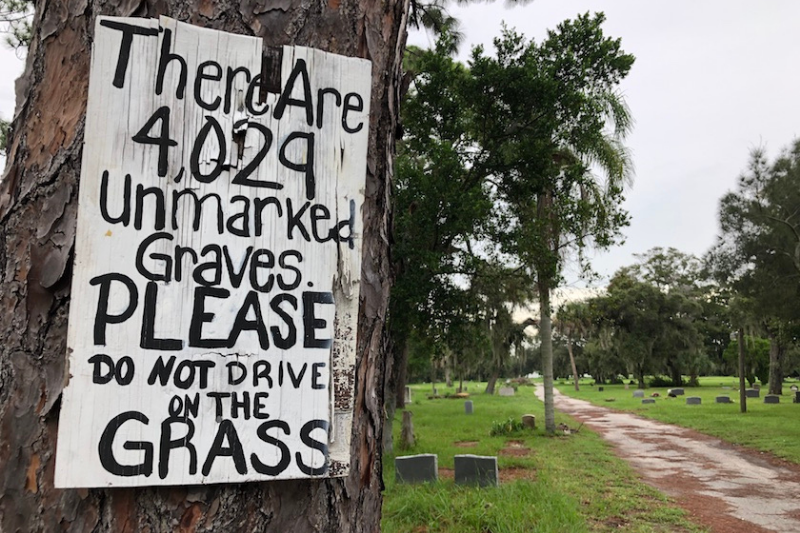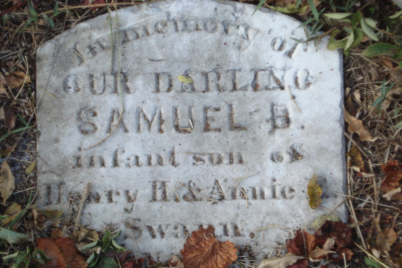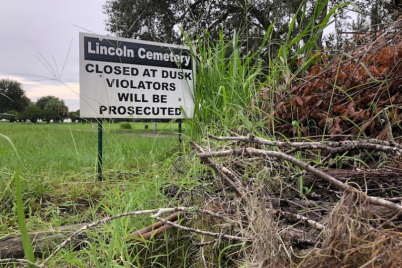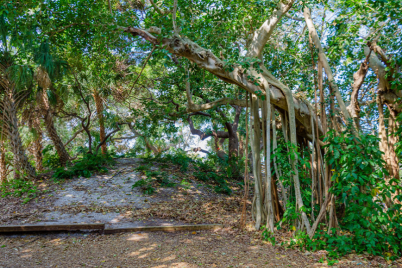Lincoln Cemetery has notable residents buried in it, including Chester James Sr., a key figure in the local Civil Rights Movement of the 1960s and 70s, and was honored by both the NAACP and President Lyndon B. Johnson for driving voter registration up among black voters in St. Petersburg. Photo by Shelly Wilson
BY JAMES A. SCHNUR, The Gabber
GULFPORT — Residents of Gulfport have had an interest in the fate of Lincoln Cemetery for many years. Established in 1926, there is a general – and incorrect – assumption that Lincoln was the original cemetery for African Americans on the lower Pinellas Peninsula.
Those old enough to remember when a railroad operated on the current path of the Fred Marquis Pinellas Trail might even invoke the old phrase “on the other side of the tracks” to describe the purpose and placement of this cemetery many years ago.
The story of Lincoln Cemetery is complicated. Controversies over Lincoln’s location, condition and operations stirred vigorous debates long before Vanessa Gray began volunteering her time to care for graves. They raged decades before this Gulfport woman established a nonprofit corporation and took possession of the cemetery in February 2017.
Recent events elsewhere have launched new debates. The uncovering of the long-forgotten Zion Cemetery under Robles Park Village and adjacent properties in Tampa last year sparked anger. Many questioned how a public housing development could be built atop those supposedly resting in peace. The subsequent discovery of the forgotten burials from the former Ridgewood Cemetery below the grounds of King High School raised new concerns.
The Black Lives Matter movement and other calls for racial and social justice have addressed inequalities and disparities that some have simply sought to bury and forget. Part of addressing this painful past involves digging up the dirt on why Lincoln Cemetery was born and how our collective memory of many burial sites has largely perished.
Only then will we bring this painful skeleton out of the closet for good. Only then can we move in a direction where society can assure that Black Cemeteries Matter, too.
In this eight-part series, we will look at some “grave situations” in Pinellas County. By exhuming the history of Lincoln and some long-forgotten burial sites in Pinellas, we see how these locations often suffered because of the race or identity of the persons buried there.
Issues that confront those of us living, such as gentrification and urban renewal, have also impacted the dearly departed as others have paved over a history they wanted us to forget, rather than lovingly remember.
The next part of this story will uncover the origins and history of Lincoln Cemetery. Why was it created in 1926? Who were the first burials? Where did caskets come from that traveled to Lincoln for a second chance at a second-class burial? What problems did Lincoln face in subsequent years?
After that, the story steps back in time to examine burial practices from long ago. Where did burials take place long before Gulfport existed, even long before its predecessors of Disston City and Veteran City? What happened to the Indian mounds? Were there bodies within any of them? What is a Potter’s field?
Next, the journey travels to Gulfport’s neighbor, a city once sarcastically referred to as “God’s waiting room.” Where did St. Petersburg bury their “nearly dead” after they died? How did urban renewal plans long before the 1960s reshape the lives of the living and the placement of the dead?
Future weeks include visits to places in mid- and upper-Pinellas. Five acres on a bluff near Seminole High School once offered Blacks a quiet place to express their grief amidst the groves. Graves located at one of the recently discovered locations in Clearwater also offer a lesson in how the county wanted to move bodies so they could perpetuate racially segregated schools.
Recent developments at two other historically Black cemeteries show how community concern and engagement can bring renewed hope. Volunteers have worked to restore the grounds of Whispering Souls, a burial ground that once served those who lived in the agricultural communities near Safety Harbor. Rose Hill Cemetery in Tarpon Springs gained long-overdue recognition and moved beyond its thorny past after it was added to the National Register of Historic Places in March 2017.
Could its experience offer a possible roadmap for Lincoln to gain greater recognition and support?
Join us for a journey that we hope will leave few stones unturned – except for those in the cemetery.








